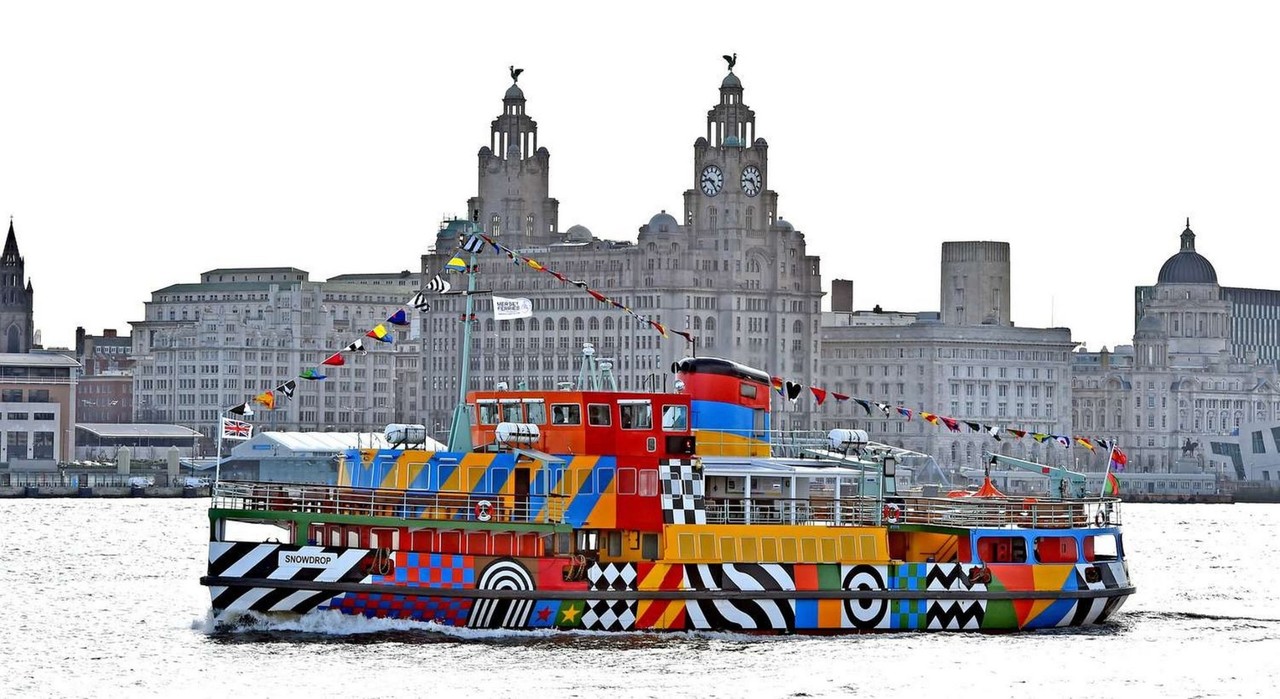
'Razzle Dazzle' or Camouflage on Ships
Dazzle camouflage, also known as 'razzle dazzle' or dazzle painting, was a family of ship camouflage used extensively in World War I and to a lesser extent in World War II and afterwards. Credited to artist Norman Wilkinson, though with a prior claim by the zoologist John Graham Kerr, it consisted of complex patterns of geometric shapes in contrasting colours, interrupting and intersecting each other.
Unlike some other forms of camouflage, dazzle works, if at all, not by offering concealment but by making it difficult to estimate a target’s range, speed and heading. Norman Wilkinson explained in 1919 that dazzle was intended more to mislead the enemy as to the correct position to take up than actually to miss his shot when firing.
Dazzle was adopted by the British Admiralty and the United States Navy with little evaluation. Each ship’s dazzle pattern was unique to avoid making classes of ships instantly recognisable to the enemy. The result was that a profusion of dazzle schemes were tried, and the evidence for their success was at best mixed. So many factors were involved that it was impossible to determine which were important, and whether any of the colour schemes were effective.
Dazzle attracted the notice of artists such as Picasso, who claimed that cubists had invented it. The vorticist artist Edward Wadsworth, who supervised the camouflaging of over 2,000 ships during the First World War, painted a series of canvases of dazzle ships after the war, based on his wartime work.
Even today it has been used by artists such as Jeff Koons on his own yacht or on the HMS President in London as part of 14-18 NOW, the official cultural programme to commemorate the centenary of the First World War. The work was done by German artist, Tobias Rehberger. The ‘dazzle’ technique has been a recurring theme in Tobias Rehberger’s work. In 2009 he was awarded the Golden Lion Award at the 53rd International Venice Biennale for a café he created that was based entirely on the principles of dazzle pattern.
In 2007, the art of camouflage, including the evolution of dazzle, was featured as the theme for a show at the Imperial War Museum. In 2009, the Fleet Library at the Rhode Island School of Design exhibited its rediscovered collection of lithographic printed plans for the camouflage of American World War I merchant ships, in an exhibition titled "Bedazzled".
In 2014, the Centenary Art Commission backed two more dazzle camouflage installations in Britain: Carlos Cruz-Diez covered the pilot ship MV Edmund Gardner in Liverpool's Canning Dock with bright multi-coloured dazzle artwork, as part of the city's 2014 Liverpool Biennial art festival; Peter Blake was commissioned to design exterior paintwork for MV Snowdrop, a Mersey Ferry, which he called "Everybody Razzle Dazzle", combining his trademark motifs (stars, targets etc.) with First World War dazzle designs.
The RMS Mauretania







